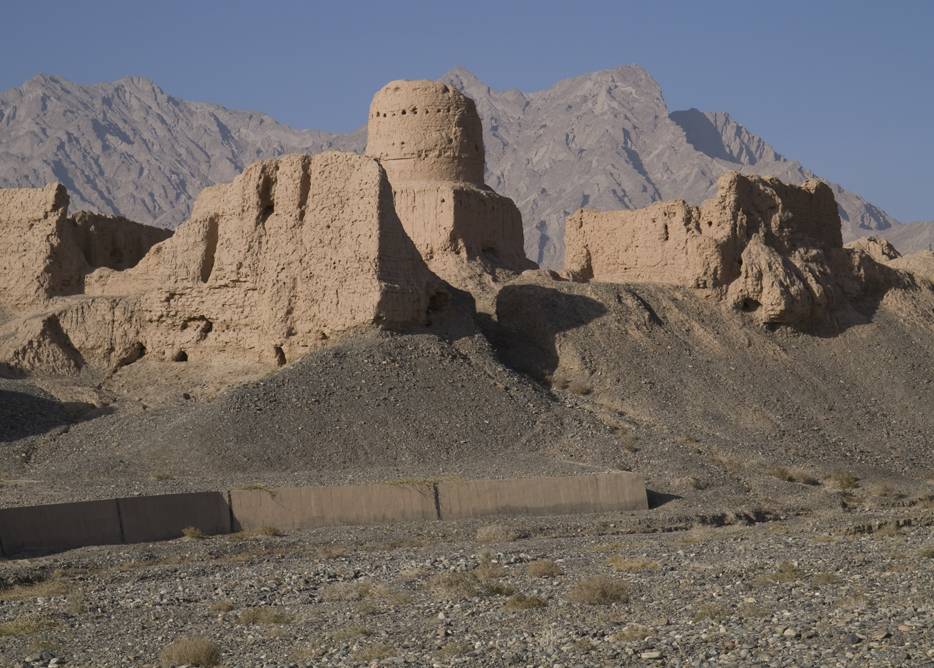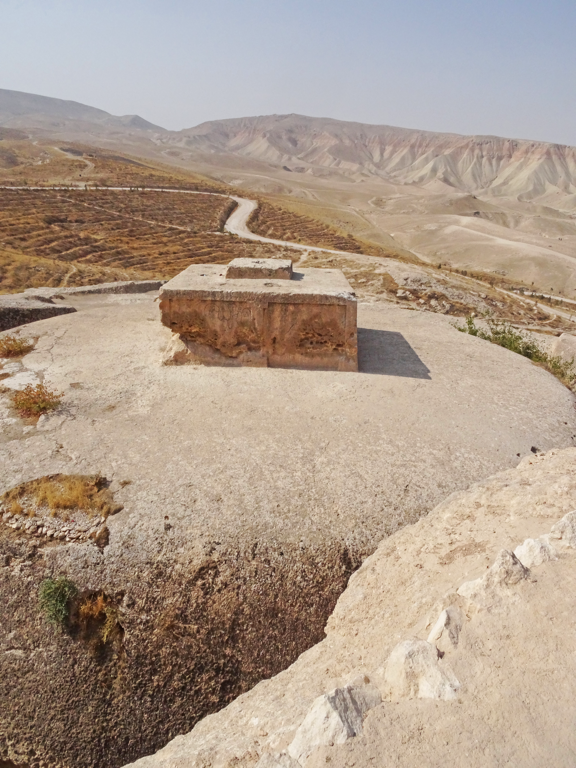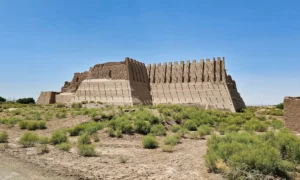Kyzyl Kala Fortress, nestled in the Karakalpakstan region of Uzbekistan, is a remnant of ancient fortification. This red-brick structure dates back to the Kushan Empire, around the 2nd to 4th centuries AD. It stands as a testament to the architectural prowess and strategic importance of the region during the Silk Road era. The fort’s discovery and subsequent excavations have provided valuable insights into the Kushan civilization and their interactions with other cultures.
Kushan Empire
The Kushan Empire, flourishing from the 1st to the 3rd centuries AD, was a remarkable civilization that played a pivotal role in the cultural and economic exchanges between the East and West along the Silk Road. Originating from the Yuezhi tribes, who migrated from the northwest of China after being defeated by the Xiongnu around 176-160 BC, the Kushans established their empire in the territories that now encompass northern India, Pakistan, and Afghanistan. Under the leadership of Kujula Kadphises, they consolidated their power and expanded their domain, laying the foundation for a prosperous empire that would leave a lasting legacy on the region.
One of the most significant rulers of the Kushan Empire was King Kanishka I, who ascended the throne in the 2nd century AD. His reign marked the zenith of the Kushan Empire’s power and influence, with his conquests extending the boundaries of the empire to Central Asia and the Ganges plain. Kanishka was also a great patron of Buddhism; under his rule, the religion flourished and spread throughout Central Asia and into China. He is credited with convening the Fourth Buddhist Council in Kashmir, which played a crucial role in the development of Mahayana Buddhism.
The Kushan Empire was renowned for its religious tolerance and the syncretic nature of its society. Besides Buddhism, a variety of religions, including Hinduism, Zoroastrianism, and local cults, coexisted harmoniously. This religious diversity was reflected in the empire’s art and culture, which were characterized by a blend of Greek, Indian, and Persian influences. The Gandhara and Mathura schools of art, which thrived during the Kushan period, are notable for their fusion of Hellenistic and South Asian artistic traditions, producing exquisite sculptures and artifacts.
Social and daily life in the Kushan Empire was marked by its cosmopolitan nature. The empire’s strategic location along the Silk Road facilitated not only the exchange of goods but also the interaction of different cultures and ideas. Cities like Taxila, Begram, and Mathura became bustling centers of trade, education, and culture, attracting scholars, traders, and artists from various parts of the world. The Kushans were instrumental in the development of the Silk Road as a major trade route, which had a profound impact on the economic and cultural landscape of Eurasia.
The Kushan economy was largely based on agriculture, trade, and the issuance of coins. The Kushans introduced a wide variety of gold, silver, and copper coins, which bore inscriptions in Greek and Kharosthi and featured images of Kushan rulers and deities. These coins not only facilitated trade but also served as a medium for the propagation of the empire’s religious and cultural ideals.
The decline of the Kushan Empire began in the 3rd century AD, as it faced pressure from the Sasanian Empire to the west and the rise of local powers in the Indian subcontinent. By the mid-3rd century, the empire had fragmented into smaller kingdoms, and its territories were eventually absorbed by other emerging powers. Despite its decline, the Kushan Empire’s contributions to the cultural and religious landscape of Asia remained influential for centuries.
The Kushan rulers, with their patronage of religion, art, and trade, left an indelible mark on the history of South and Central Asia. The empire’s legacy is evident in the spread of Buddhism along the Silk Road, the flourishing of Gandhara and Mathura art, and the enduring impact of its coinage system. The Kushan Empire stands as a testament to the rich cultural synthesis and exchange that characterized the ancient world.
In conclusion, the Kushan Empire was a crucible of cultural, religious, and economic exchanges that significantly shaped the course of Asian history. Its strategic position along the Silk Road facilitated the blending of diverse traditions, contributing to the development of a unique civilization that bridged the East and West. Despite its eventual decline, the legacy of the Kushan Empire continues to resonate, highlighting the enduring power of cultural and economic connectivity in shaping human history.

Subashi Temple
The Subashi Temple, nestled in the Taklamakan Desert of China’s Xinjiang region, stands as a testament to the rich tapestry of Silk Road history. This Buddhist temple complex, now in ruins, once served as a spiritual hub for travelers and monks. It offers a glimpse into the religious and cultural exchanges that took place along this ancient trade route. The temple’s remnants, with their intricate carvings and architectural prowess, continue to intrigue historians and archaeologists alike.

Takht-e Rostam
Steeped in history, Takht-e Rostam is an ancient archaeological site in Afghanistan. It’s a testament to the country’s rich cultural heritage. The site includes a stupa-monastery complex carved into a mountain. This reflects the influence of Buddhism in the region. Visitors are often captivated by the blend of cultural elements evident in the site’s art and architecture. Takht-e Rostam is not only a symbol of Afghanistan’s historical religious diversity. It also stands as a beacon of the intricate craftsmanship of ancient times.

